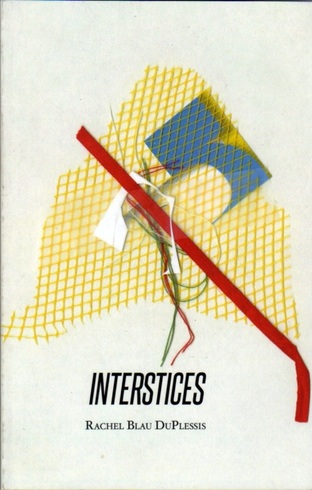
This first poetry book since DuPlessis appeared to abandon or end her almost four-decade “life poem” Drafts (Surge: Drafts 96-114, 2013) consists of 52 sections – 26 titled “Letter” and 26 titled “Ledger.” 26 letters is a familiar reference, and indeed there is one “letter” addressed to each alphabet letter. Unlike Virginia Woolf's Prof. Ramsay, DuPlessis gets all the way to “zed” – early in the book, too. And indeed it makes sense for a writer to address the members of the alphabet, one’s literal friends – without them how could a writer be a writer? Another writer of a “life poem,” bpNichol, had a career-long dialogue with them, from The Birth of O in 1966, through several ‘ABCs,’ to the “bp:if” of The Martyrology’s last lines.
“Ledger” doesn’t have the same literary resonance as “letter,” or reason to be limited to 26. But it does satisfyingly balance literacy with numeracy, relating with accounting. (In 1979 Nichol considered titling all of the later parts of his life poem “A Counting.”) Poets do count, count as citizens, count the ways, the lines, the hours, the syllables, the stresses, the accuracies, the book reviews. DuPlessis here takes account – takes a count – each time she writes: following, and sometimes preceding, each “letter” with a “ledger.” Balancing the book.
But not just this book. What is balanced or summed is both the poet’s life and life of life-poem writing – the recently closed or ‘finished’ Drafts. The title of her 1970 Columbia University dissertation on Williams and Pound was “The Endless Poem.” That of her 1985 book on twentieth-century women writers was Writing Beyond the Ending. Such
The poem being stoppage
in a flow of dynamism –
Does one want to take
that way as path”
she writes in the opening “Ledger 1.
Prefer each poem’s
daunting, empathetic form.
It’s way of exceeding itself
and losing itself
in strings of letters,
split strata of ur-URLs. (1-2)
DuPlessis's continually present pun on letters makes “the string of letters” here both the components of words and the strung together sequence of letters to letters – X, Z, A, V, O, J, B etc. – that one is about to read.
The universe red-shifts to hypertext.
A set of clicks across the umpty
black and brackish
“atom-o-sphere”
Her “umpty” sets up a play on “empty” which builds on those seemingly blank interstices, while her “hypertext” links a paltry alphabet to the vastly networked signalling of a “universe” whose “atom-o-sphere” of successive recreations on recreation implicitly dwarf the current (undoubtedly momentary) and frequently narcissistic blogosphere. This universe
will cough its spute-y bit of phelgm
reach for a hundred me-pty
filed and wrotten
helpless notebooks
a.k.a. not-books
and unbegin
ungain.
Made and unmade
Mantled and dismantled. (2)
The "poem" – and again this word points back to Drafts – whose own title was openly tenuous, provisional –
has been “finished”
but has barely begun.
It has been collected
but then has disappeared
Lost and found and lost again
It re-emerges in the little split
in in-between.
I.e. in the interstice.
This is dense, complex and playful writing, which continues through the next 51 sections during the which alphabet letters are repeatedly both signifier and signified, often – as in the letter to “Dear I” – multiple signifieds.
Like the recent poetry books of Ron Silliman and George Bowering, Interstices is marked by an awareness of aging and inevitable death, for DuPlessis an awareness of inevitable ending framed and informed by continuings, beginnings, and other endings. Not a last ("ten fingered") write but a continuing write.
And it has blown
to the ten fingered winds
(they’d be “of time”)
up through the reddening changing
changeling leaves
as they shimmer before they fall
This is marked lento
but also prestissimo.
Contradictorily. (3)
FD
 RSS Feed
RSS Feed